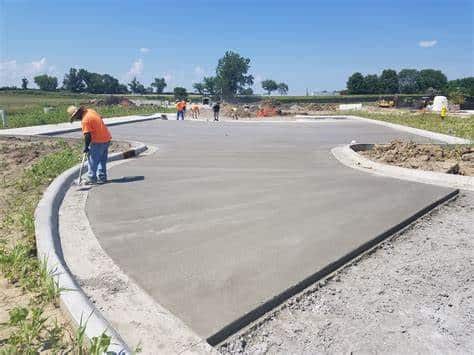What Precautions You Should Take When Working With Concrete In El Cajon?

- Concrete is abrasive and can cause skin irritation, chemical burns, and even eye damage if it comes into contact with your body. Always wear the right protective gear when working with concrete. This includes safety goggles to protect your eyes from splashes, a dust mask or respirator to prevent inhalation of dust particles, and gloves to shield your hands from skin irritation. Sturdy work boots with slip-resistant soles are also a must to protect your feet from any accidental spills or drops.
- Concrete work often generates a significant amount of dust, which can be harmful if inhaled. Ensure your workspace is well-ventilated to reduce the concentration of airborne particles. Consider using exhaust fans or opening windows and doors to improve airflow. If you’re working indoors, it’s essential to use dust collection systems or wear a respirator with the appropriate filtration.
- Concrete can be incredibly heavy, especially in its liquid form. When lifting bags of concrete mix or buckets of wet concrete, use proper lifting techniques to prevent strains and injuries. Bend your knees, keep your back straight, and lift with your legs, not your back. If the load is too heavy for you to handle safely alone, don’t hesitate to ask for assistance or use mechanical aids like wheelbarrows or forklifts.
- Concrete can become extremely hot as it cures, and this heat can accelerate the setting process, potentially leading to weaker, more brittle concrete. To prevent this, keep the concrete moist during curing. You can do this by covering the concrete with wet burlap, plastic sheeting, or using curing compounds that form a moisture-retaining film on the surface. Proper curing not only ensures the strength of the concrete but also minimizes the risk of cracks and surface defects.
- Wet concrete is incredibly slippery, and it’s easy to lose your footing if you’re not cautious. To prevent slips and trips, keep your work area clean and free of debris. Place warning signs or barriers around the wet concrete to prevent others from accidentally stepping into it. Additionally, consider wearing slip-resistant footwear with good traction when working on or around concrete.
FAQs
Can I Pour Concrete In Cold Weather?
Yes, you can pour concrete in cold weather, but it requires additional precautions. Cold weather can slow down the curing process and potentially weaken the concrete. To mitigate this, use concrete with additives designed for cold weather, maintain proper curing conditions (including temperature control), and consider using insulated blankets to keep the concrete warm during the initial curing stages.
How Can I Prevent Concrete Cracks?
To prevent concrete cracks, ensure proper reinforcement with steel mesh or rebar, control the water-to-cement ratio, and follow the recommended curing practices. Properly preparing the subbase and controlling the rate of drying can also help prevent cracks from forming.
Can I Reuse Concrete Forms For Multiple Projects?
Yes, you can reuse concrete forms, but it’s essential to inspect them thoroughly for wear and damage between uses. Damaged or worn forms can lead to imperfections in the concrete’s finish and compromise the structural integrity of your project. Repair or replace any damaged forms before reusing them.
Conclusion
Working with concrete can be a rewarding experience, but it’s crucial to prioritize safety and quality. By wearing appropriate protective gear, ensuring proper ventilation, using correct lifting techniques, keeping the concrete moist during curing, and being mindful of slips and trips, you can minimize risks and achieve successful concrete projects. Remember that concrete work requires careful planning and attention to detail, and taking these precautions is the first step toward achieving excellent results while staying safe. For more information, contact Concrete Contractor El Cajon at (619) 473-4433.